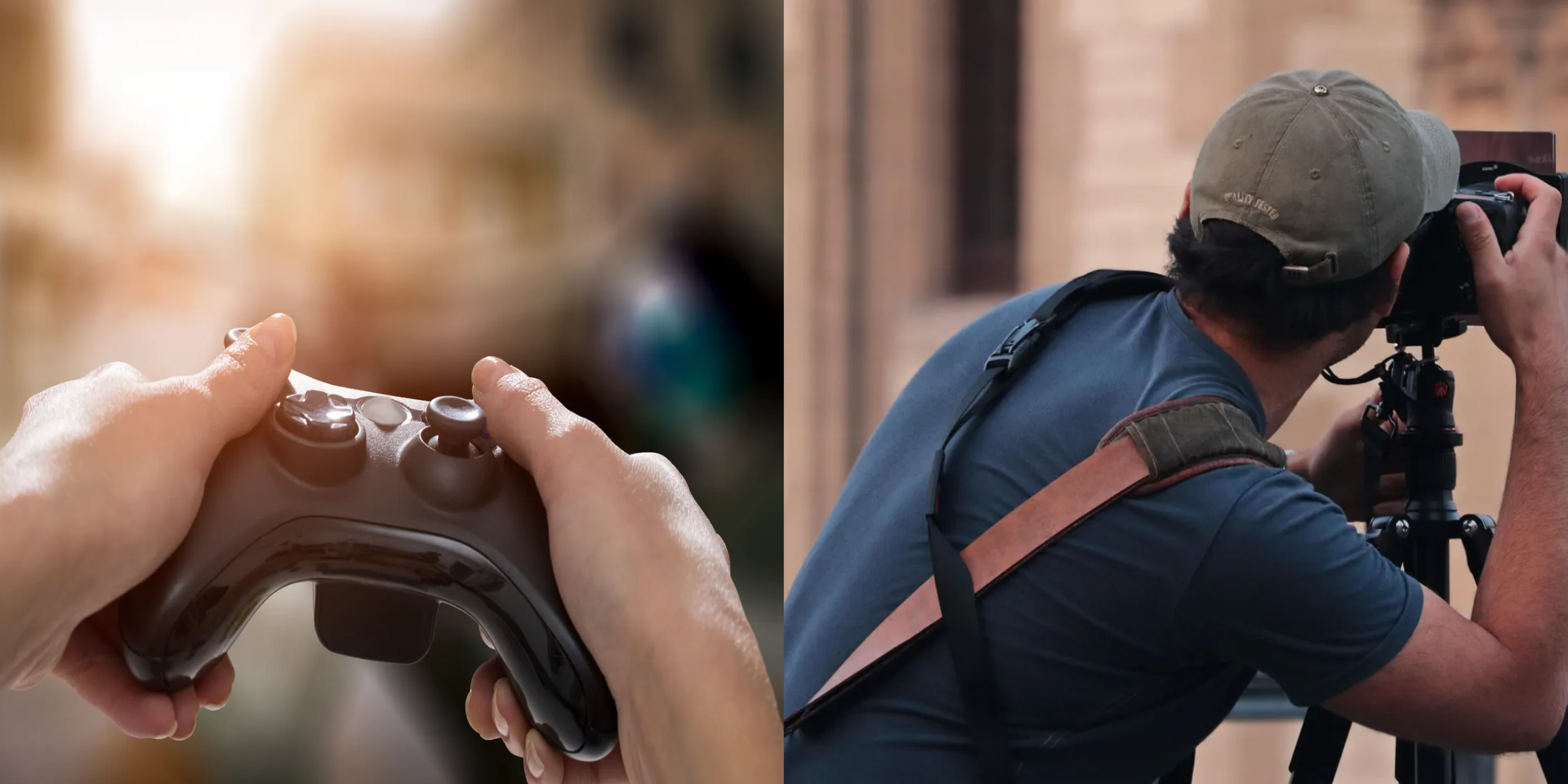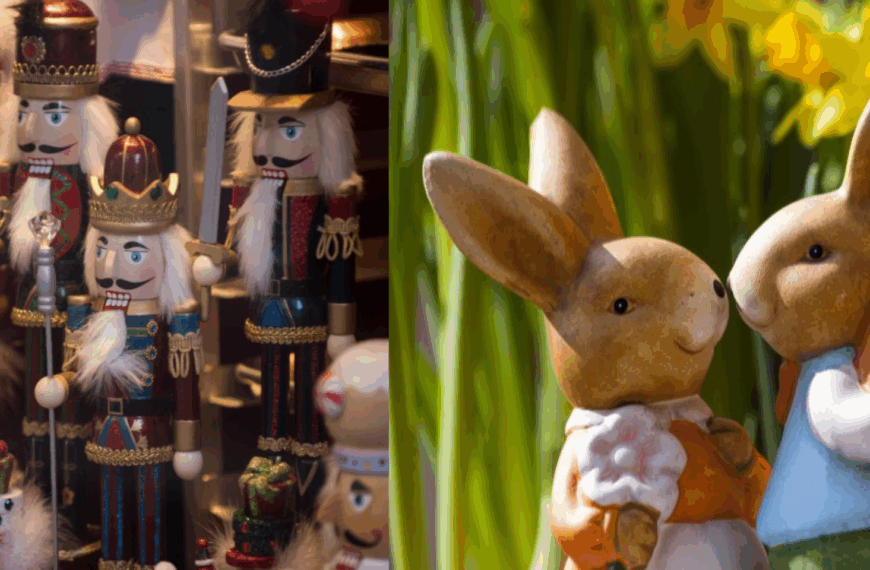Ever wondered what Americans do when they’re not working, sleeping, or arguing about pineapple on pizza? Spoiler alert: We’re busier than you think.
Introduction: The Great American Hobby Revolution
Picture this: It’s 7 PM on a Tuesday, and somewhere in suburban Kansas, Dave is meticulously arranging his stamp collection while simultaneously streaming a cooking show and planning his next hiking adventure. Meanwhile, in downtown Seattle, Sarah is editing her latest TikTok while her sourdough starter bubbles away in the kitchen. Welcome to modern America, where having just one hobby is practically un-American.
The United States isn’t just the land of the free and the home of the brave—it’s also the nation of “Why have one passion when you can have twenty?” According to recent surveys, the average American has at least 3-5 active hobbies, and frankly, we’re not even mad about it. From traditional pastimes that would make our grandparents proud to digital-age pursuits that would have confused them entirely, American hobbies tell a fascinating story about who we are, what we value, and how we choose to spend our precious free time.
But here’s the million-dollar question: What are we actually doing with all that enthusiasm? Whether you’re a hobby collector looking for your next obsession, a cultural observer trying to decode American DNA, or someone who genuinely believes “I don’t have any hobbies” (we’ll fix that), this comprehensive guide reveals the top 20 hobbies that have captured American hearts, minds, and wallets.
Ready to dive into the wonderfully chaotic world of American leisure? Let’s explore why millions of people are choosing to spend their evenings, weekends, and sometimes entire life savings on these pursuits.
The Psychology Behind Our Hobby Obsession
Before we jump into the list, let’s address the elephant in the room: Why are Americans so hobby-crazy? It turns out there’s actual science behind our collective need to fill every spare moment with purposeful activity.
The Stress Escape Factor
In a country where “How’s work?” is basically a greeting, hobbies serve as our collective pressure valve. Dr. Sarah Wilson, a behavioral psychologist at Stanford University, explains: “Americans use hobbies as a form of active meditation—they’re seeking flow states that work culture rarely provides.” Translation: We’re all just trying to forget about Monday morning meetings and find some zen.
The Identity Building Component
Unlike many cultures where identity is largely defined by family or community roles, Americans have embraced hobbies as a core part of personal branding. We’re not just “John from accounting”—we’re “John from accounting who builds incredible miniature trains and makes a mean barbecue sauce.” Hobbies give us permission to be multidimensional humans in a world that often tries to put us in boxes.
The Achievement Addiction
Let’s be honest: Americans love to win, progress, and level up. Hobbies provide a safe space to experience achievement without the stakes of professional life. Whether it’s completing a 1,000-piece puzzle, growing the perfect tomato, or finally mastering that guitar solo, hobbies offer bite-sized victories that keep us motivated.
The Top 20 Most Popular Hobbies in America: A Deep Dive
1. Reading: The Original Binge-Watching
Popularity Score: 95/100 Average Time Investment: 5-10 hours per week Typical Spending: $200-500 annually
Before Netflix taught us what “just one more episode” meant, books were the original page-turners. Reading remains America’s #1 hobby, and for good reason—it’s the ultimate multitasker’s dream. You can read while commuting, exercising (audiobooks, we see you), or hiding from your responsibilities.
Why Americans Are Still Obsessed:
- The Escape Factor: Books offer the ultimate virtual reality experience without needing a headset
- The Status Symbol: A well-curated bookshelf is basically intellectual interior design
- The Flexibility: From romance novels to business biographies, there’s a book for every mood and moment
Pro Tip for Beginners: Start with audiobooks during commutes. Your brain will thank you, and you’ll finally have something interesting to say at dinner parties.
The Numbers Game: Americans buy over 2.7 billion books annually, and the average household contains 114 books. That’s enough reading material to survive a zombie apocalypse with style.
2. Gaming: From Basement Hobby to Cultural Empire
Popularity Score: 92/100 Average Time Investment: 8-15 hours per week Typical Spending: $300-1,200 annually
Gaming isn’t just for teenagers in their parents’ basements anymore (though we respect the classics). Today’s gamers include your 45-year-old neighbor who dominates Fortnite and your grandmother who’s somehow a Candy Crush legend.
The Gaming Revolution Explained:
- Mobile Accessibility: Smartphones turned everyone into potential gamers
- Social Connection: Online multiplayer games have replaced the neighborhood pickup basketball game
- Professional Opportunities: Esports athletes now make more than some traditional sports stars
Why It’s Addictive: Games provide instant feedback, clear objectives, and measurable progress—basically everything missing from real life. Plus, where else can you be a space warrior, medieval knight, and professional race car driver in the same afternoon?
Hidden Benefit: Gaming improves problem-solving skills, hand-eye coordination, and teaches valuable lessons about failure and persistence. Take that, critics who said video games would rot our brains.
3. Gardening: The Original Farm-to-Table Movement
Popularity Score: 88/100 Average Time Investment: 4-8 hours per week Typical Spending: $150-600 annually
The pandemic turned millions of Americans into accidental gardeners, and apparently, we liked what we grew. Gardening combines the satisfaction of nurturing life with the practical benefit of having something to show for your efforts (hello, fresh tomatoes).
The Gardening Appeal:
- Therapeutic Benefits: Soil contains natural antidepressants—literally dirt therapy
- Control Factor: In a chaotic world, gardens represent something you can actually manage
- Instagram-Worthy Results: Those perfectly arranged vegetable harvest photos aren’t going to post themselves
Beginner’s Reality Check: Your first garden will probably look more like a plant cemetery than a magazine spread, and that’s perfectly normal. Even experienced gardeners kill plants—they just don’t post about it on social media.
4. Fitness and Exercise: The American Wellness Industrial Complex
Popularity Score: 91/100 Average Time Investment: 6-12 hours per week Typical Spending: $500-2,000 annually
Americans have turned fitness into both a religion and a competitive sport. From boutique studios that cost more than college tuition to home gym setups that rival commercial facilities, we’re serious about our sweat sessions.
The Fitness Obsession Breakdown:
- Variety Addiction: Yoga Monday, CrossFit Wednesday, spin class Friday—why commit to just one torture method?
- Community Building: Fitness classes provide built-in social circles for adults who otherwise struggle to make friends
- Measurable Progress: Fitness trackers have gamified health, turning daily steps into personal achievements
Cultural Context: In a country where healthcare is expensive and vacation days are limited, preventive fitness feels both practical and indulgent.
5. Traveling: Collecting Experiences Like Pokémon Cards
Popularity Score: 89/100 Average Time Investment: Variable (planned obsessively year-round) Typical Spending: $1,000-5,000+ annually
American wanderlust is real, and social media has only fueled the fire. We’re not just taking vacations—we’re curating experiences, collecting passport stamps, and turning travel into a competitive sport.
The Travel Evolution:
- Experience Economy: Americans increasingly value experiences over material possessions
- Social Media Motivation: If you didn’t post about your trip, did it really happen?
- Accessibility Revolution: Budget airlines and travel apps have democratized exploration
The Hidden Psychology: Travel provides temporary escape from routine while offering stories that last a lifetime. Plus, nothing makes you appreciate home like sleeping in hostels and eating questionable street food.
6. Streaming and Entertainment: The Art of Professional Relaxation
Popularity Score: 94/100 Average Time Investment: 10-25 hours per week Typical Spending: $200-800 annually
Americans have elevated watching TV and movies to an art form. We don’t just watch shows—we analyze them, theorize about them, and build entire social relationships around shared viewing experiences.
Why Streaming Became America’s National Pastime:
- Choice Overload: With hundreds of platforms and thousands of options, finding something to watch has become a hobby itself
- Social Bonding: Discussing last night’s episode is the modern water cooler conversation
- Escape Efficiency: Maximum relaxation with minimal effort required
Pro Insight: The average American has 4.1 streaming subscriptions. We’re literally paying multiple companies to help us avoid human interaction.
7. Cooking and Baking: The Delicious Creative Outlet
Popularity Score: 86/100 Average Time Investment: 5-12 hours per week Typical Spending: $300-1,000 annually
Cooking transformed from survival necessity to creative expression, thanks largely to food shows that made kitchen skills seem both accessible and aspirational.
The Cooking Revolution Components:
- Creative Expression: Food is edible art that people actually appreciate
- Practical Satisfaction: Unlike many hobbies, cooking provides immediate, useful results
- Social Currency: Being known as a good cook opens doors and starts conversations
Reality Check: For every Instagram-worthy dish, there are approximately seven kitchen disasters that never make it to social media. Embrace the fails—they make the successes taste better.
8. Hiking: Nature’s Gym Membership
Popularity Score: 82/100 Average Time Investment: 4-8 hours per weekend Typical Spending: $200-800 annually
Americans discovered that walking uphill while carrying a backpack can be both torture and therapy. Hiking combines fitness, nature appreciation, and the perfect excuse to buy expensive outdoor gear.
The Hiking Appeal:
- Mental Health Benefits: Nature reduces stress and improves mood—it’s literally therapeutic
- Achievement Orientation: Summits provide clear goals and photo opportunities
- Digital Detox: Cell service is spotty on mountains, forcing actual human connection
Hidden Truth: Half the motivation for hiking is the gear shopping and trail planning. The actual hiking is just the excuse to justify buying $200 boots.
9. Photography: Everyone’s an Artist Now
Popularity Score: 85/100 Average Time Investment: 3-10 hours per week Typical Spending: $300-2,000+ annually
Smartphone cameras turned everyone into photographers, but serious hobbyists have elevated the art form, investing in professional equipment and developing actual skills beyond Instagram filters.
Photography’s Democratic Revolution:
- Accessibility: Good cameras exist in everyone’s pocket
- Creative Expression: Photography combines technical skill with artistic vision
- Memory Preservation: Photos capture moments and stories for future generations
Professional Potential: Photography is one of the few hobbies that can realistically become a side hustle or full career transition.
10. Arts and Crafts: The Pinterest Industrial Complex
Popularity Score: 78/100 Average Time Investment: 3-8 hours per week Typical Spending: $200-600 annually
Arts and crafts experienced a massive renaissance, driven by Pinterest inspiration and the desire to create something tangible in our increasingly digital world.
The Crafting Renaissance:
- Mindful Creation: Crafts provide meditative focus and stress relief
- Customization Culture: Handmade items offer uniqueness in a mass-produced world
- Economic Opportunity: Etsy and craft fairs provide legitimate income streams
Psychological Benefit: Creating with your hands activates different brain regions than screen-based activities, providing mental balance and satisfaction.
The Psychology of American Hobby Culture
The “More is More” Mentality
Americans don’t just have hobbies—we collect them like trophies. The average American maintains 3-5 active hobbies simultaneously, a phenomenon psychologists call “leisure multiplication.” We’re not content mastering one skill; we want to be Renaissance people who can discuss quantum physics, perfect a sourdough recipe, and nail a guitar solo in the same conversation.
The Social Media Effect
Instagram and TikTok haven’t just documented hobbies—they’ve fundamentally changed them. Hobbies now serve dual purposes: personal satisfaction and social validation. The result? More Americans are choosing photogenic hobbies and investing in presentation as much as skill development.
The Wellness Integration
Modern American hobbies increasingly serve multiple functions: entertainment, stress relief, physical health, and personal development. We want hobbies that make us better people, not just busier ones.
Emerging Trends: The Hobbies of Tomorrow
Digital Natives Meet Analog Crafts
Younger Americans are gravitating toward traditional, hands-on hobbies as a counterbalance to screen-heavy lifestyles. Pottery classes, woodworking, and textile arts are experiencing unexpected growth among millennials and Gen Z.
Sustainable Hobbies
Environmental consciousness is reshaping hobby choices. Foraging, upcycling, and urban farming are growing rapidly among eco-minded Americans who want their leisure time to align with their values.
Micro-Hobbies
Attention spans may be shrinking, but hobby enthusiasm isn’t. Americans are embracing “micro-hobbies”—pursuits that can be enjoyed in 15-30 minute sessions, perfect for busy lifestyles.
The Economic Impact: How Hobbies Drive American Commerce
Americans spend over $200 billion annually on hobbies, making leisure activities a significant economic force. This spending supports entire industries:
- Craft and Art Supplies: $44 billion annually
- Fitness Equipment and Memberships: $35 billion annually
- Books and Reading Materials: $15 billion annually
- Gaming Hardware and Software: $60 billion annually
Hobbies aren’t just personal pursuits—they’re economic drivers that support millions of jobs and countless small businesses.
Choosing Your Next Hobby: A Strategic Approach
Consider Your Lifestyle Reality
Before falling in love with a new hobby, honestly assess your available time, space, and budget. That pottery wheel looks amazing on Instagram, but does it fit in your studio apartment?
Start Small, Scale Smart
Most successful hobbyists begin with minimal investment and grow gradually. You don’t need professional equipment to start—you need curiosity and consistency.
Embrace the Learning Curve
Every hobby has a frustration phase where your expectations exceed your abilities. This is normal, temporary, and necessary for growth. The key is pushing through the awkward beginner stage.
Find Your Community
Hobbies are more enjoyable and sustainable when shared. Look for local clubs, online communities, or classes where you can connect with fellow enthusiasts.
The Health Benefits: Why Hobbies Are Medicine
Research consistently shows that regular hobby engagement provides measurable health benefits:
- Stress Reduction: Hobbies lower cortisol levels and blood pressure
- Cognitive Protection: Engaging hobbies may reduce dementia risk
- Social Connection: Group hobbies combat loneliness and build community
- Purpose and Identity: Hobbies provide meaning beyond work and family roles
Dr. Patricia Johnson, a lifestyle medicine specialist, notes: “Hobbies aren’t luxury activities—they’re essential components of mental and physical health maintenance.”
Conclusion: The Art of Meaningful Leisure
American hobby culture reflects our deepest values: creativity, self-improvement, community, and the pursuit of personal fulfillment. In a world that often reduces us to job titles and social media profiles, hobbies remind us that we’re complex, multifaceted humans capable of growth, creativity, and joy.
Whether you’re a serial hobby collector or someone who insists “I don’t have time for hobbies,” remember this: The question isn’t whether you have time for leisure pursuits—it’s whether you have time NOT to pursue them. Your mental health, social connections, and overall life satisfaction depend on having interests beyond work and responsibilities.
So, what’s calling to you? Maybe it’s time to dust off that guitar, plant those seeds, or finally start that novel. Your future self—and your stress levels—will thank you.
Frequently Asked Questions
Q: How do I find time for hobbies with a busy schedule? A: Start with “micro-sessions”—15-20 minutes of hobby time daily. Early mornings, lunch breaks, and evening wind-downs are perfect for quick hobby engagement.
Q: Is it normal to have multiple hobbies? A: Absolutely! The average American maintains 3-5 hobbies. Variety keeps things interesting and provides different types of satisfaction.
Q: How much should I spend on a new hobby? A: Start with a minimal investment to test your interest. Most hobbies can be explored for under $50 initially. Invest more as your commitment grows.
Q: What if I’m not naturally creative or athletic? A: Every skill is learnable with practice. Focus on progress, not perfection, and remember that everyone starts as a beginner.
Q: Can hobbies really improve my mental health? A: Yes! Research shows that regular hobby engagement reduces stress, improves mood, and provides sense of accomplishment and community connection.
Ready to Start Your Next Hobby Adventure?
Share this article with someone who needs a new passion project, or better yet, invite them to try a hobby together. Life’s too short for boring weekends and empty evening hours. Your perfect hobby is out there waiting—go find it!







